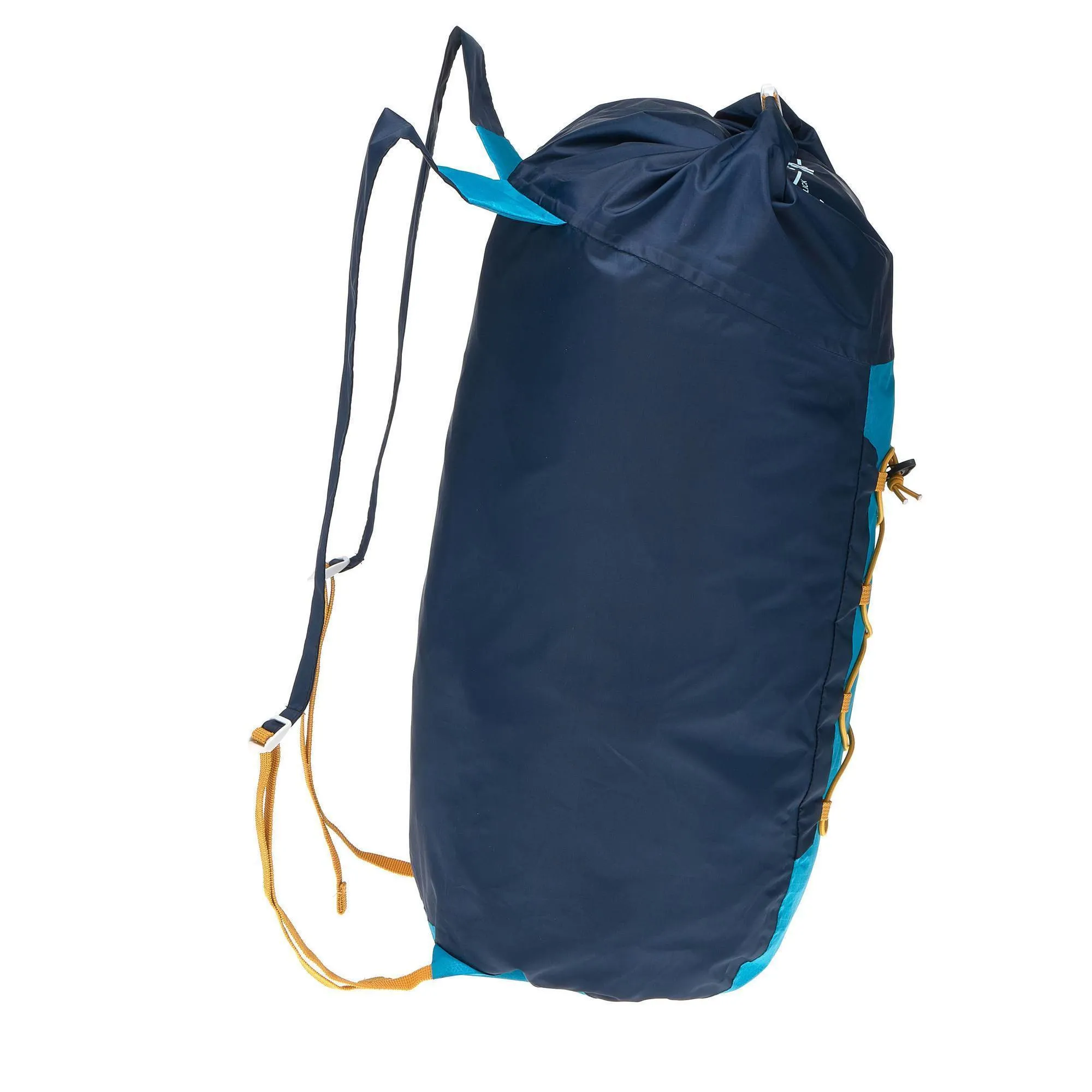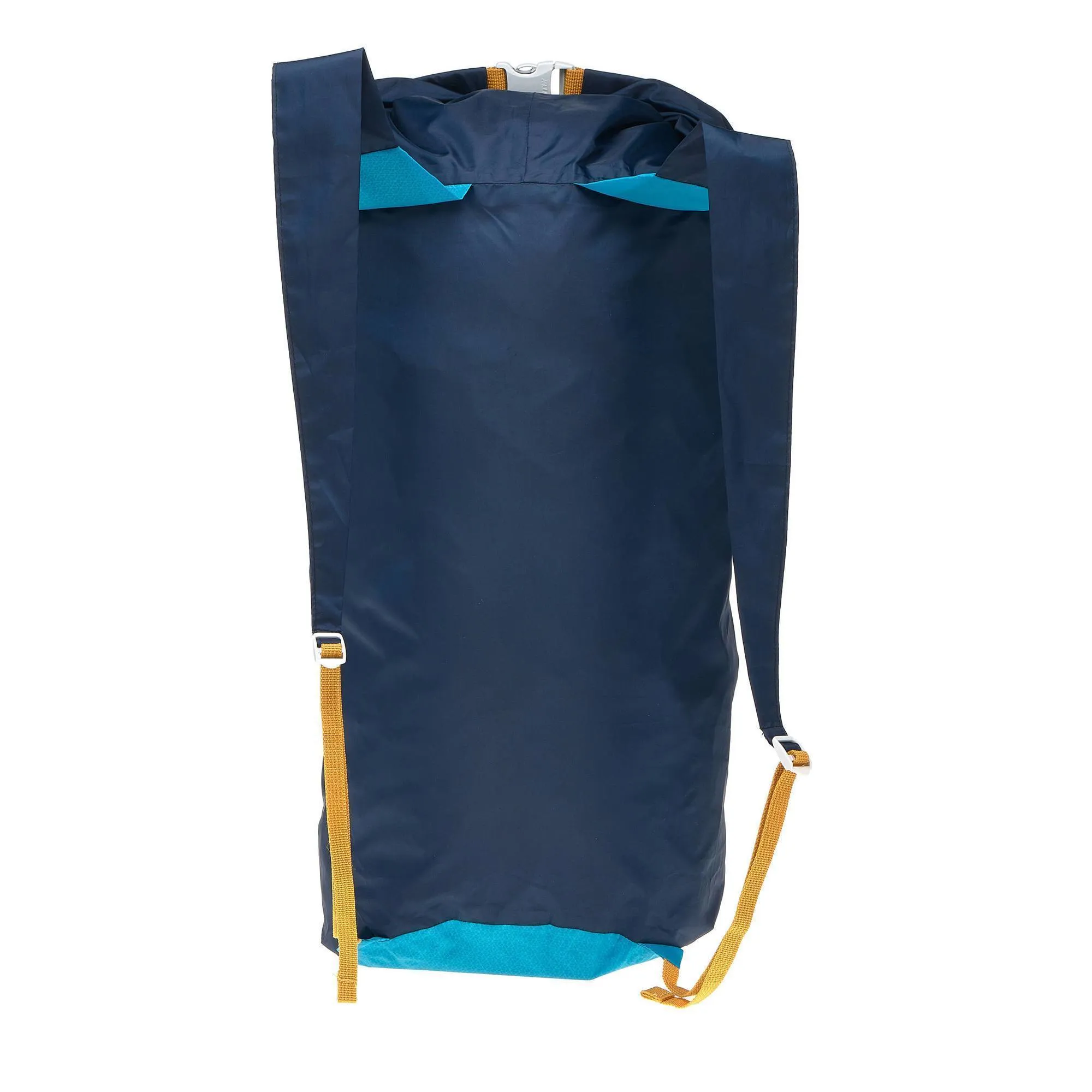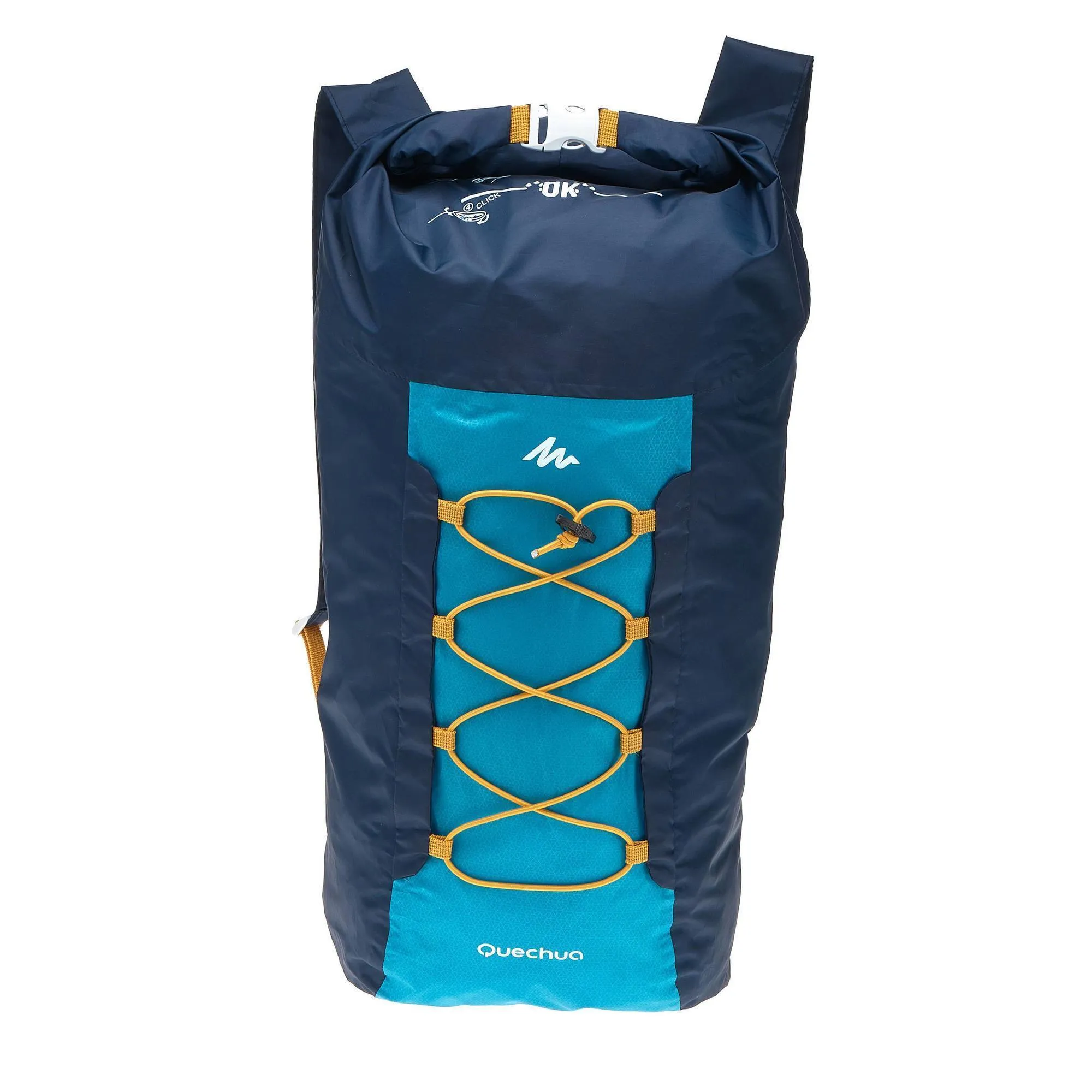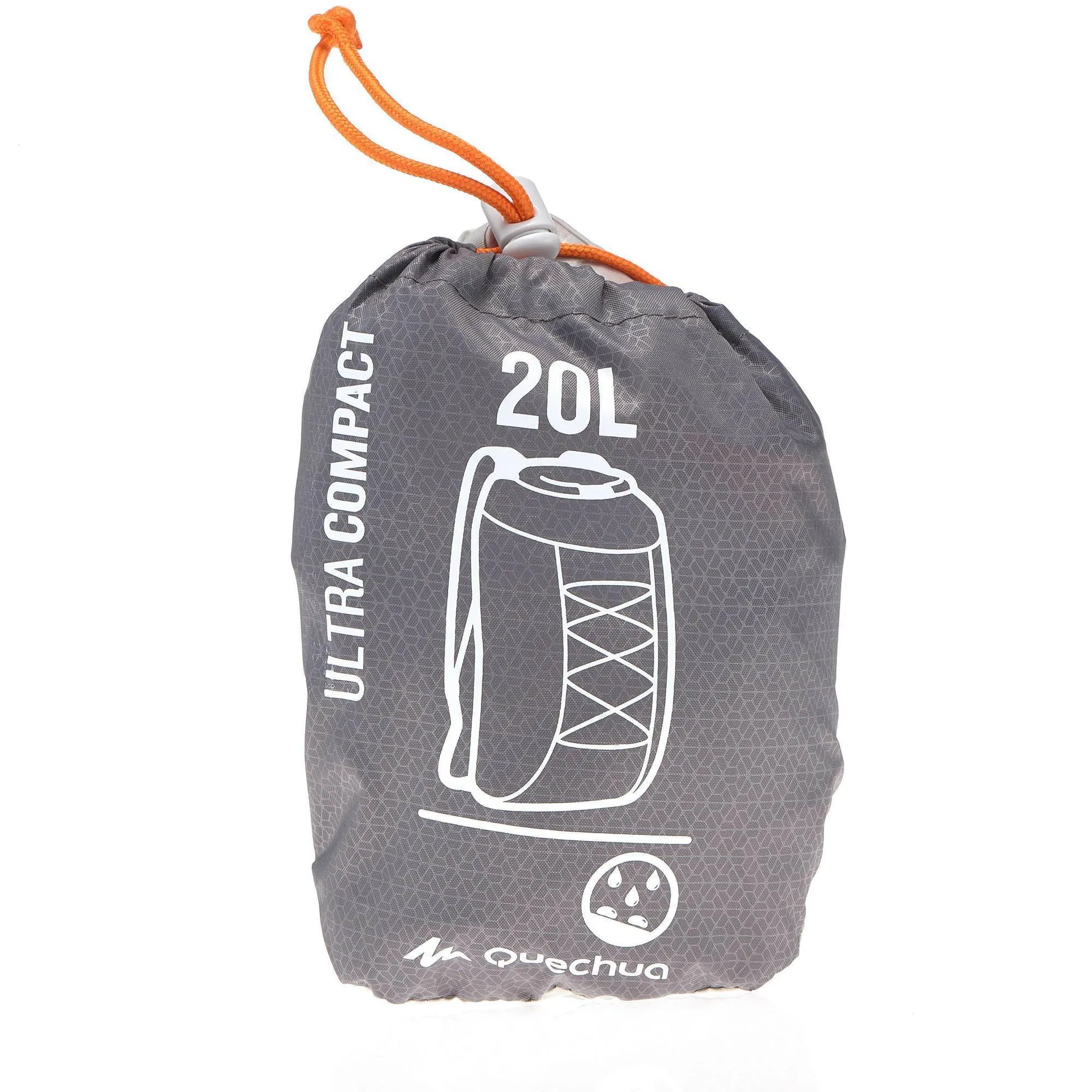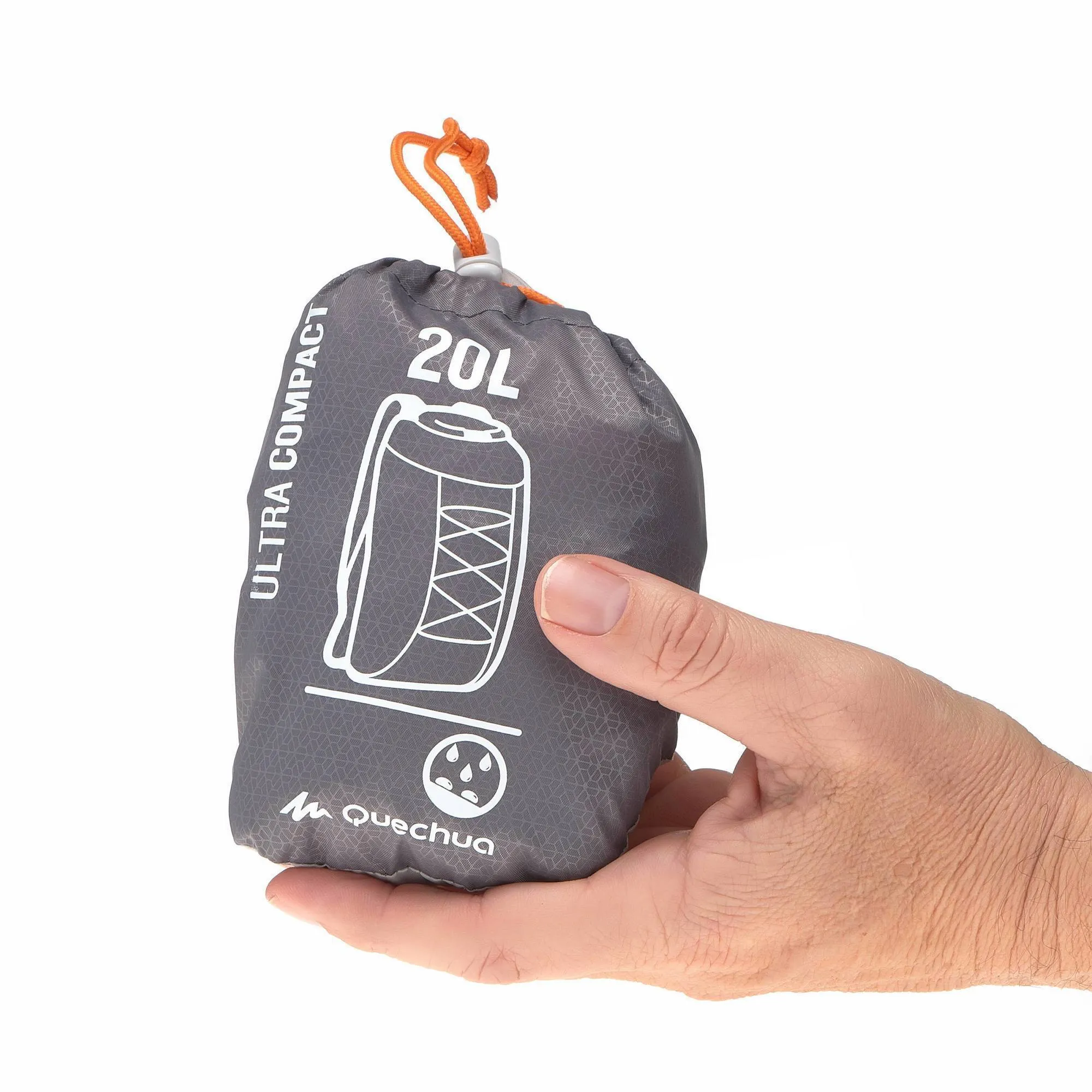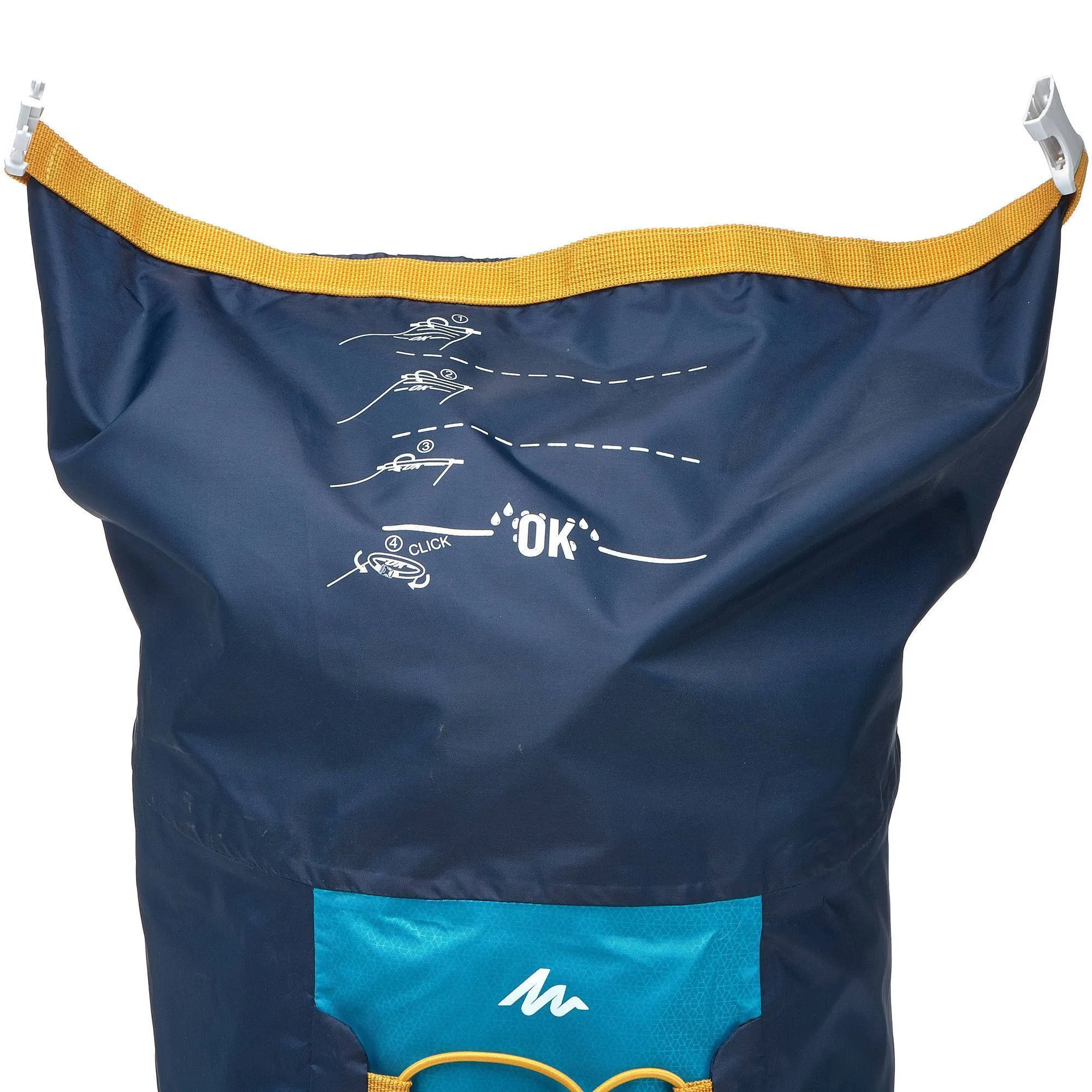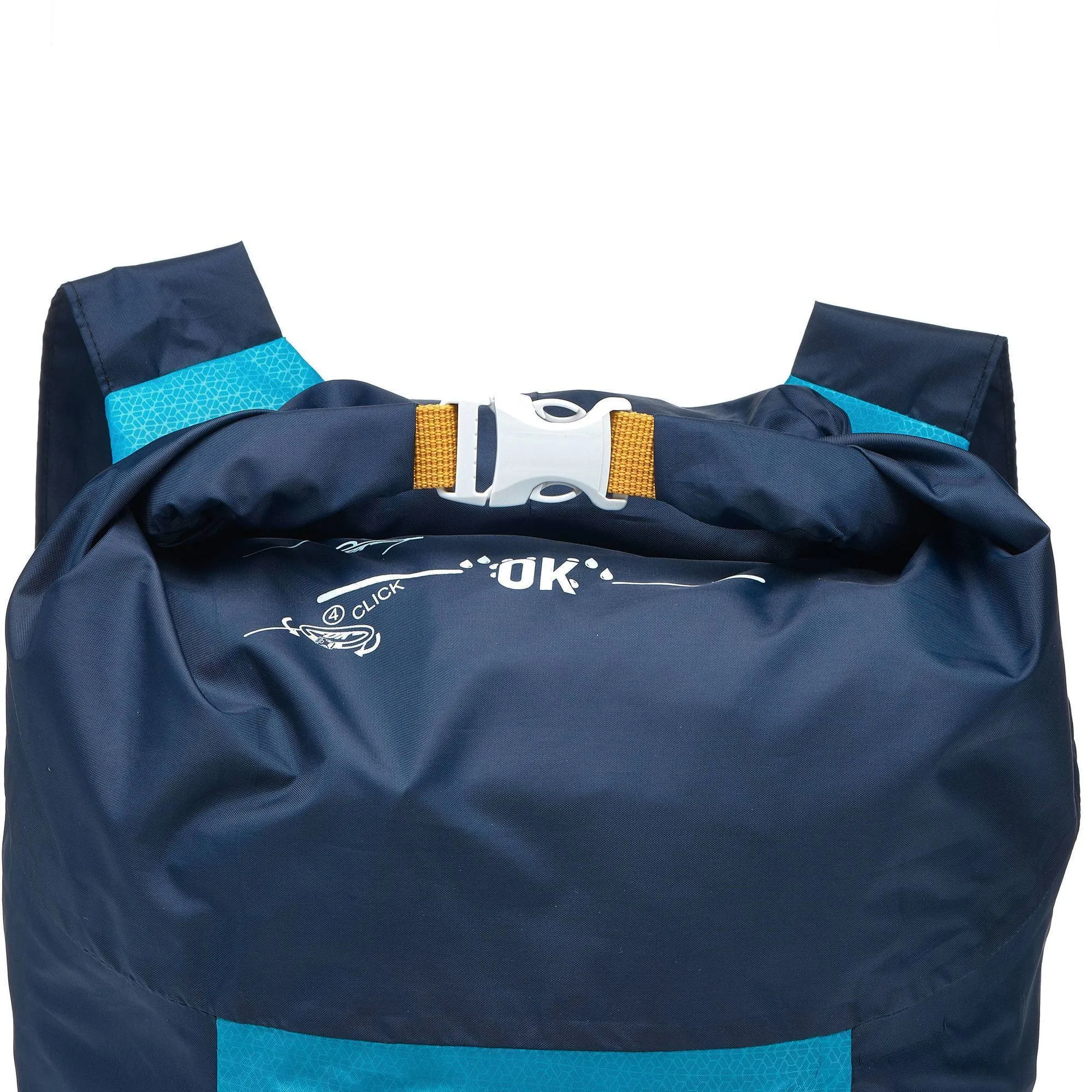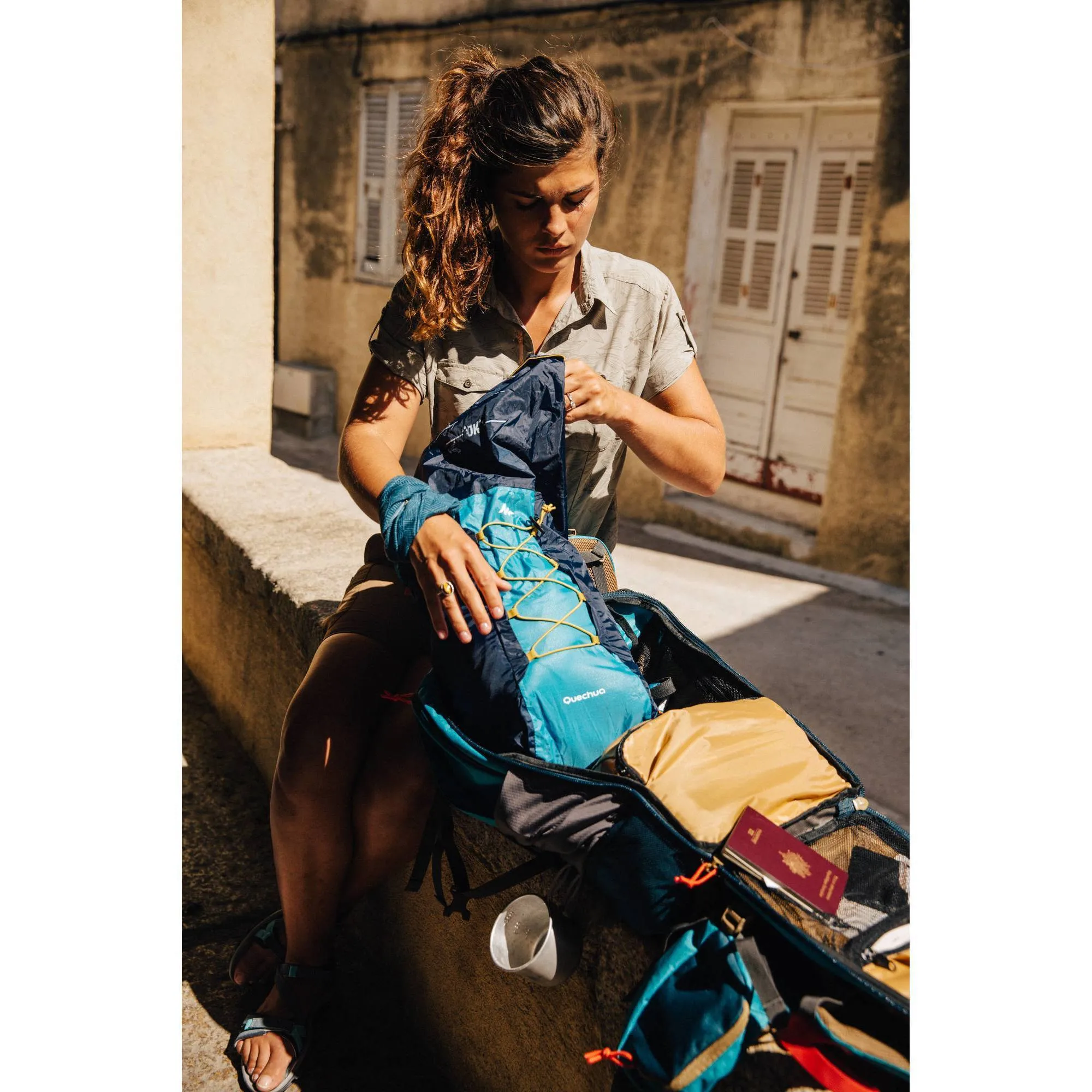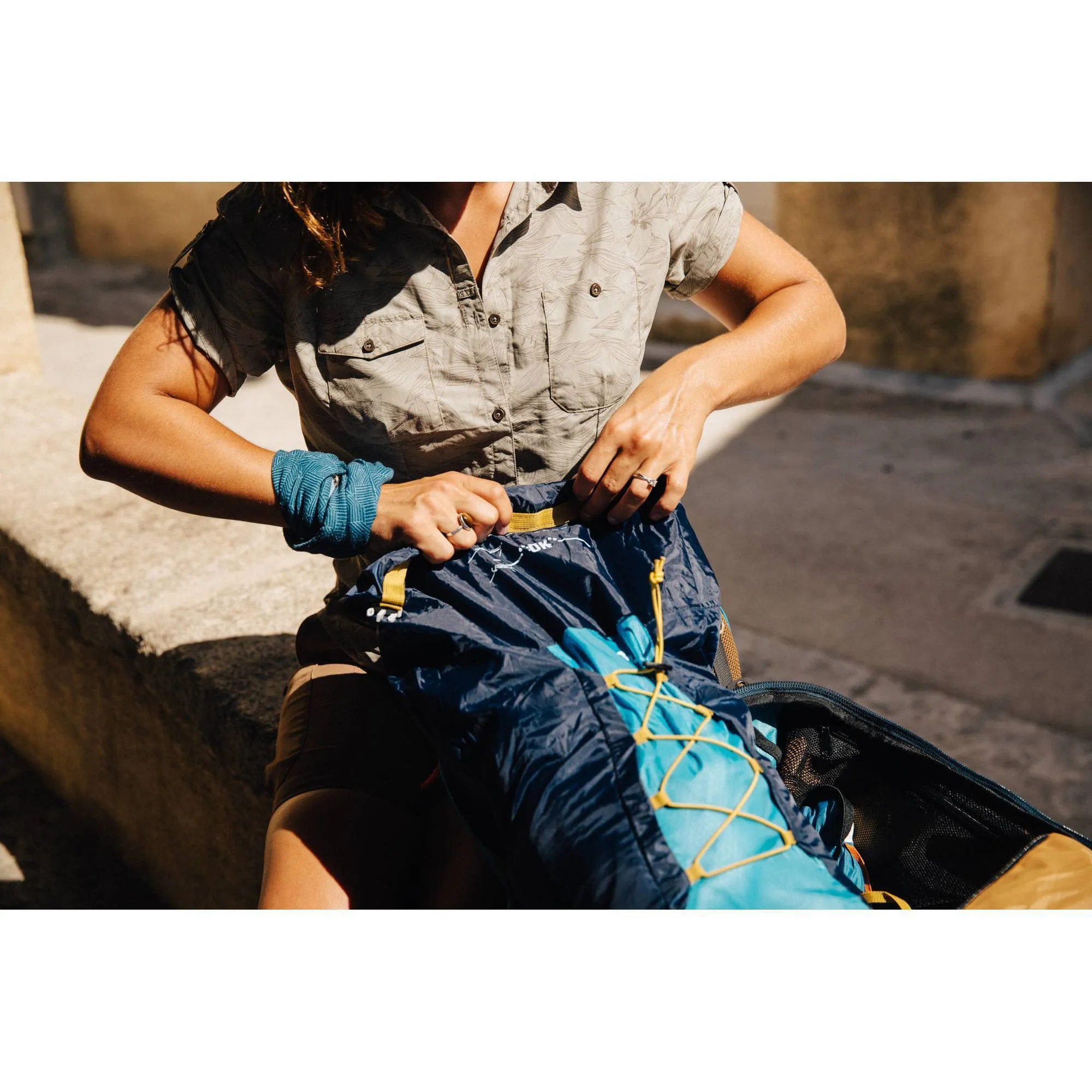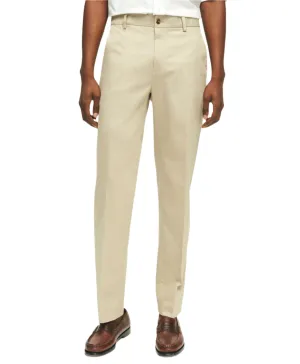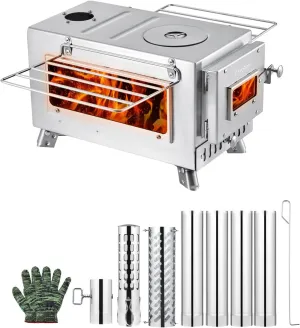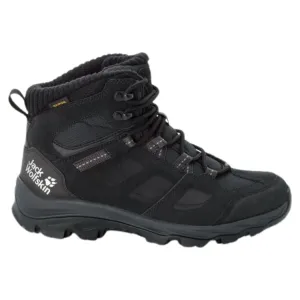100 waterproof, ultra-compact and light: 3.4 oz
---specs---
Backpack technical tests
All components are approved in laboratory tests, including:fabric, buckles, straps, foam, zippers, etc. Example, for a fabric:
resistance to wear, tearing, color-fastness in UV rays, washing, waterproofing, etc.
A final test on the finished product simulates the kind of treatment to which it will be subjected over several years, to assess the strength of the fabrication. The backpack is weighted then placed on a dummy which then reproduces the movement of fast walking through thousands of cycles
How is backpack volume measured?
The volume of each backpack is measured using a standardized method:
we fill the main compartment as well as
each pocket with little balls. Then we empty these balls into a graduated container, which gives the equivalent volume in gallons
A ranking to compare the environmental impact of products
The environmental impact of the product is calculated for the whole life cycle with different indicators. An overall ABCDE ranking has been created to make it easy for you to identify the products with the best environmental impact by comparing them with other similar products (T-shirts, pants, backpacks, etc.).
Decathlon has chosen to display this environmental information voluntarily.
For more information:
Composition
Main fabric : 100.0% Polyester cationic
Storage Instructions
store your bag in a dry place.
Guarantee
2 Years
---/specs---
---catchline---
An ultra-compact, waterproof extra backpack, which folds up into a small ball and can be stored in the pocket of another backpack.
---/catchline---
---features---
Capacity
20 L and 97 g
Multiple compartments
1 pocket
Compact design
folds up into a very compact, small ball
Environmental impact
Life cycle comparison: Backpack - sustainability.decathlon.com
---/features---
---made_for---
hikers looking for an extra backpack for a short tour around their refuge or bivouac
---/made_for---
---videos---
p1032907,p1027360
---/videos---






